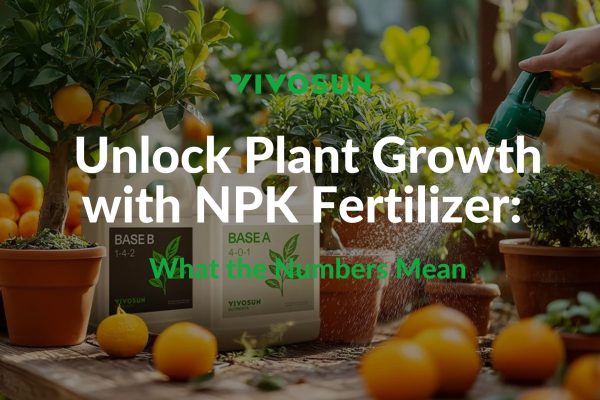So you are excited about your next harvest, but you have been waiting for about a week for your seedlings and there is no sign of growth. You get anxious, having no idea what to do next. You are wavering—you should give up on seed germination, right? Don’t worry! We are here to help you out.
Before giving up on seeds that do not germinate, you still have some options. First, you need to figure out which method you used to germinate. We will list some mistakes you may make during germination and you can check whether you made any of these mistakes to see if you can save your seedlings.
Check out your seeds
Are your seeds too old? Have your seeds been stored properly? How about the quality of your seeds? Seeds have a storage life and they should be stored in a cool, dark, dry environment—have your seeds been kept correctly? You can dig up one seed from the soil (in the case that it didn’t germinate), to see if there are any changes compared to when you first planted it—if nothing has changed, it means the seedlings may have not been properly stored.
If your seeds are green or white, throw them away. Unviable seeds will always be useless, even if you provide an ideal environment for them, they will never germinate. Also, the germination time of seeds differs, you can google the germination time of the seeds you are prepared to grow. Sometimes being patient and giving your seeds more time to germinate may be enough. Good things come to those who wait.
Germinate seeds in water
This is the fastest way to germinate. Keep observing your seeds during this process. Once you see the sprout/taproot, transfer the seeds into the soil—be sure not to leave them in water too long as they will start to rot.

Germinate seeds in soil
- Watering: Be sure you are not overwatering or underwatering. Seeds need water to germinate but they cannot absorb enough oxygen if the soil is too wet. To avoid overwatering, you can use the sprayer to water when the soil feels dry. Underwatering is better than overwatering since overwatering can cause seeds to rot, at which point you will not be able to save the seeds. Overwatering is probably the most common way people kill their plants.
- Planting depth: Seeds should be sowed about 1cm (or twice the seed’s diameter, about 1/3 an inch) from the surface so that they can absorb light and oxygen.
- Temperature and humidity: Seeds prefer a moist and warm environment. There is a higher possibility of germination if you can keep the soil temperature between 68℉- 80℉. A heat mat can help you control the soil temperature during this fragile stage of growth. During this period, your grow light type, your on/off cycle, and the distance you keep your lamp from your plants all contribute to the seedling’s health.
- Soil: Make sure your soil is loose enough for the seed to sprout (we recommend you to try Rockwool Grow Cubes). You can add some fertilizer or organic matter to the soil but be sure that you don’t add too much and do not add it directly on top of your seedlings. Of course, don’t use soil that you cannot trace the origin of or do not know what additives are in it. Before you plant, be sure to test the pH level of the soil because the wrong pH level can kill a seedling. The ideal pH level for seeds ranges from 5.5 – 7.0.
- Pests and Fungi: Fungi can also cause your seeds to rot. Damping-off is a disease caused by fungi, which is commonly seen in indoor growing. You will see a white mold growing around the affected seeds—if this happens to your seeds, they are likely dying or will be dead shortly and there is no good way to help them. Dealing with fungi is about preparation. We’ll be publishing an article about Damping-off in the future so follow us for advice on how to deal with fungus before it grows.

Germinate seeds in a paper towel
If you decide to germinate your seeds in a paper towel, you still need to keep in mind that your seeds can rot. Don’t use a sopping wet paper to germinate your seeds as this can encourage growth of fungus. Further, be sure to keep them in a warm environment, between 77℉- 82℉. Once you see the signs of germination (the little white taproot), transfer them into the soil. Don’t leave them in the paper towel or exposed to air for too long.

When Should You Give Up on Seeds That Have Not Germinated?
As long as your seeds are healthy and they didn’t rot, you can rescue them: raise the temperature if the temperature is low, water more if they are not wet enough.
Sadly, you cannot count on every seed sprouting—it is normal to have a germination rate of around 80% as sometimes seeds simply are not viable.
Being aware of all the mistakes you may make not only help you to improve the success of the germination but can also accumulate your experience in planting—this is the way professionals build their skills.
Try these different techniques out and let us know if they helped you answer whether your seeds are still viable or not! Sometimes it is just best to wait and see what happens.
So now do you know when to give up on seed germination?
More Information about Seed Germination:
How Long Does Germination Take?
Remember: if things aren’t working out and your seeds are not growing, just try again. Growing is about experimenting and learning, and failure is a part of the process. Online, we tend only to see successes, so don’t get disheartened! If your seeds still aren’t germinating and you can’t figure out the reason, please message us on Instagram for help. We’ll see you there!
Subscribe to the Vivosun newsletter for growing tips, grower stories, and special offers, and get 12% off your first order!
We love the new Vivosun Smart Grow System and we are certain that you too will love it once you try it.
And join our Facebook farmer’s community for even more exclusive contests and prizes!
Download Vivosun App to explore more information!

You may also like articles about When to give up on seed germination:






